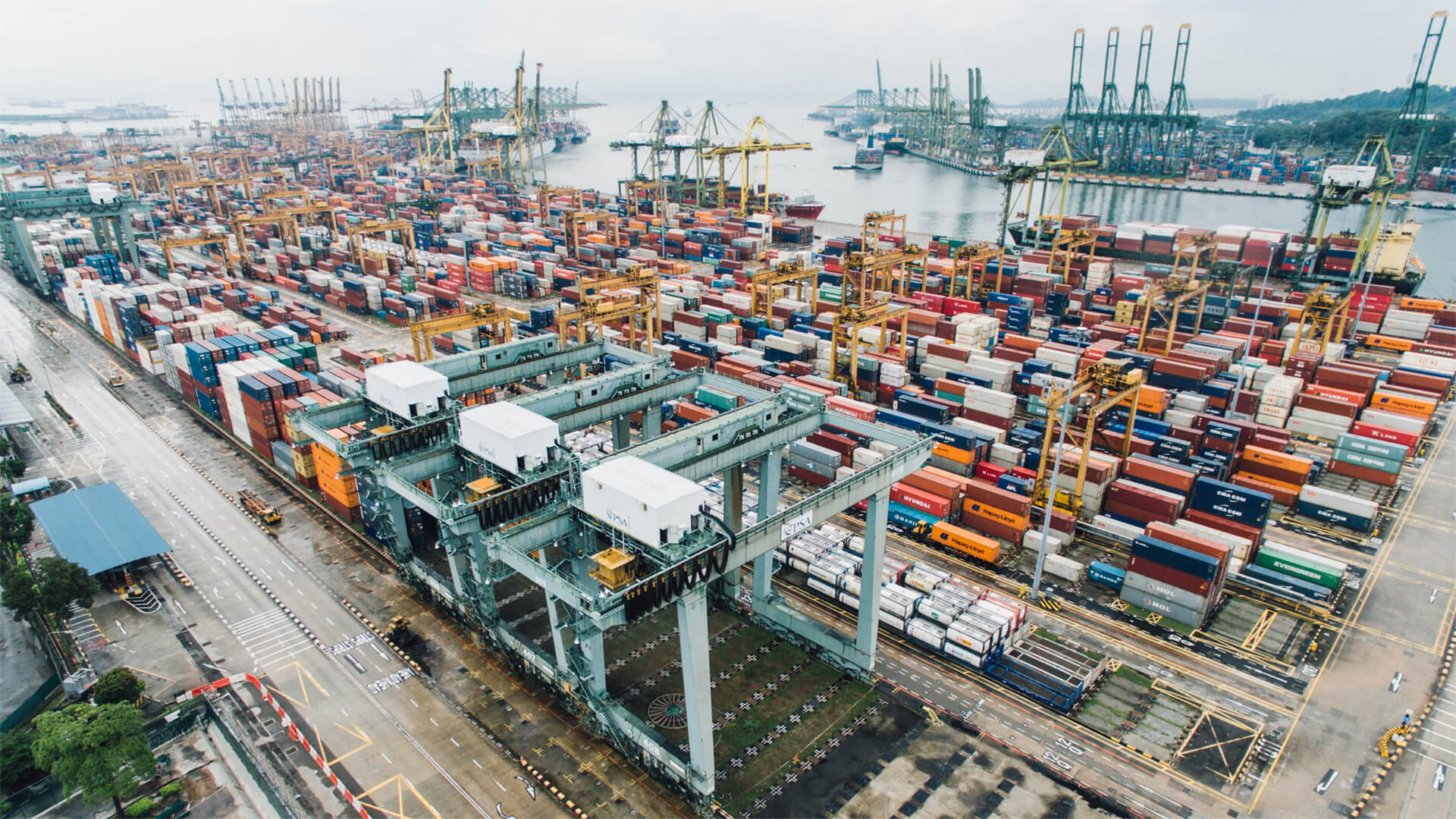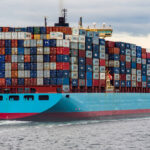You’re receiving this video a week after its initial posting on Patreon. If you’d like to get access to this content as soon as it’s released, along with a number of other exclusive perks, click the link below.
Back to the picket lines we go…this time with the longshoreman. Ports across the East and Gulf Coasts of the US will impacted by the strike, disrupting nearly two-thirds of the imports and exports by water.
European manufacturers are going to take a hit on this one, along with the US agricultural industry. We’re not just talking a couple days sitting in limbo either, even if the strike ends today, we’re still looking at weeks to clear the backlogs.
The unions’ demands on this one are pretty hefty; we’re talking about a 70% pay increase and a ban on automation at ports. In an industry that’s already plagued by slow advancement and limited automation, this ban would set the US way back. On top of that, the Jones Act has exacerbated the inferences of shipping in the US. So, we’re not talking about a duct tape solution here, its going to be a complex one.
There’s always a way forward, so what does that look like? Manufacturers can brush up on their Spanish and become friends with our neighbors to the South and/or they can build some more warehouses and stop relying on just-in-time supply chains. But that’s costly and inefficient, so expect some economic hurdles along the way.
Here at Zeihan On Geopolitics we select a single charity to sponsor. We have two criteria:
First, we look across the world and use our skill sets to identify where the needs are most acute. Second, we look for an institution with preexisting networks for both materials gathering and aid distribution. That way we know every cent of our donation is not simply going directly to where help is needed most, but our donations serve as a force multiplier for a system already in existence. Then we give what we can.
Today, our chosen charity is a group called Medshare, which provides emergency medical services to communities in need, with a very heavy emphasis on locations facing acute crises. Medshare operates right in the thick of it. Until future notice, every cent we earn from every book we sell in every format through every retailer is going to Medshare’s Ukraine fund.
And then there’s you.
Our newsletters and videologues are free and we will never share your contact information with anyone. All we ask is that if you find one of our releases in any way useful, that you make a donation to Medshare. Over one third of Ukraine’s pre-war population has either been forced from their homes, kidnapped and shipped to Russia, or is trying to survive in occupied lands. This is our way to help who we can. Please, join us.
Transcript
Hey everybody. Peter Zeihan here. Coming to you from Dallas. Oh, humid even in October. Anyway, today we’re going to talk about the longshoremen strike on the East and Gulf Coast of the United States. They’ve been in place for a couple of days already by the time you’ve seen this, and we’re looking at roughly half of America’s ability to import and export.
Close to two thirds by water has been shut down. Basically, every port from Maine to the Texas border with Mexico is in effect, and all the ports are closed. This is going to have an impact far more than the actual time of the strike, which is so far to be determined, because for every day that the strike has shut down the ports, it takes about four days for once they reopen to clear the backlog.
So, if you hear that the port has been cleared while you’re watching this video, it’s still going to be upwards of two weeks before they actually get back to normal. And so, if this lasts through the entire month of October, that will obviously impact the holidays and going into the new year. Now, who gets hurt most by this?
Europe is the short version of all this — Europe and agriculture. So, first Europe. The Asians obviously import and export via the West Coast of the United States, which has a different union structure. Talk about them later. But the European model is different from the Asian model when it comes to interfacing with the United States.
In Asia, they either import finished products. Well, no, that’s the bottom line. They import finished products for the most part. The Europeans bring in all kinds of parts and have them assembled within the United States as much as possible so that they then can get around tariff walls. That means that the parts have to have access.
So most of the automotive industry that is in the East or the West Coast regions that has a European component is doing things that way. And it’s not just automotive. It’s pretty much any sort of manufacturing that the Europeans are looking to source closer to the demographic strike that is the United States. And so without that constant flow of parts, the whole thing gets disrupted.
And that’s going to have a very big impact on employment and economic growth throughout the entire eastern seaboard for the foreseeable future. The second group that gets hit is the United States agricultural system because moving things by water is really the only way you can ship things to the wider world, with the exception of Mexico. And so, everything that comes off of rail, everything that goes down the Mississippi to New Orleans, has to get repackaged onto another vessel — oceangoing vessel — at the port and then sent out, and that has basically stopped.
Now, we are kind of in a lull of seasons, agriculturally speaking, so if this only lasts a couple of weeks, no big deal. But if it lasts a month and we’re talking about all of the grains that are coming out of the Midwest suddenly having very few places to go. All right. How is this able to happen?
Well, the United States has an incredibly stupid law called the Jones Act. And you’ve probably heard me talk about it before because it prevents any cargo being transported by any ship between any two American ports by being transported by anything but a system that is 100% American-owned, captain-crewed, and built. We don’t do this for any other modes of transport.
And if we did, we’d be in a significantly worse economic position than the United States is. But since this law was passed in 1920, we’ve seen the amount of cargo in terms of value per mile that has shipped on our waterways drop by over 99%. There’s also a couple of clauses in the Jones Act regarding port management, which basically makes them all local monopolies.
And unions have taken advantage of this by forming a network of unions. It takes in all of the ports so that when one of them strikes, they can all strike. If this was done in the corporate world, this would obviously be easily illegal. And what the unions are demanding is a 70% pay increase. But the real kicker is they want a guarantee in their contracts that no automation will ever be added.
They want to go with like 1970s, 1980s levels of automation. And already, America’s East Coast ports are among the world’s least functional. There are a number of ports on the African continent that actually are more advanced than ours now. Now, under normal circumstances, what we would do — we, the United States, whatever — is give them everything that they say they want.
And then behind the scenes, work, work, work, work, work to add automation so that this can never happen again. That’s more or less what happened with the Teamsters union on the West Coast. And now, the port of LA has gone from one of the worst in the world in just the last few years to one of, you know, let’s call it above average. Repeating that on the East Coast would be wonderful.
That’s probably not going to happen for political reasons. Not only is this an election year, we are going through our once-every-generation-or-two political realignment in the United States, and the factions that make up our parties are moving around. And one of those factions is organized labor. One of Donald Trump’s political successes was teasing them out of the Democratic coalition, but he has not yet succeeded in folding them into the Republican coalition.
So they’re kind of out there in the wind right now, free agents. And as the Chinese system fails and as the euro system falters, if Americans still want manufactured goods, we have to build them ourselves. Well, that means we need to double the size of the industrial plant. How many of those jobs do you think are going to be?
Blue-collar? Probably 80% or more of them. So we are at the dawn of the golden age of organized labor in the United States, and the Longshoremen’s Union is part of that process. So it’s difficult to see the Biden administration using its executive power — which it does have — to forcibly end the strike before the election. You can’t say it won’t happen, but it’s politically more complicated now than it would have been the last time this went down.
In the 1980s. And so we’ve got a very different situation here, and it’s going to be complicated because neither side really wants to piss off organized labor right now. Now, if you’re a manufacturer, you’ve got two possible solutions here. The first one is the easiest one, and the one that will probably be followed most aggressively: Mexico.
Mexico. Mexico. Mexico. Mexico. Mexico. Mexico. Over 90% of our trade with Mexico is done by truck and rail. It doesn’t touch the ports at all. One of the advantages of having a land border. And so, the Mexican integration with especially Texas, but the United States in general, isn’t being affected by this really much at all. And that’s certainly going to increase the argument that Mexico not only is our number one trade partner but is going to maintain that position for the rest of our lives.
And by “our,” I mean anyone who’s alive today. The second piece is a little uglier, and it’s not ideal. And that’s inventory. We’ve spent the last 40 years in manufacturing going to something called Just in Time. The idea that as you get better with logistics, you can partner with all of your suppliers so every piece arrives at the moment you need it in order to assemble a product.
And by doing it that way, you don’t have to buy rafts of warehouses to keep parts for emergencies. You can just focus on the supply chain. Well, if the supply chain is not reliable because of strikes at ports, you have to go back to something called just in case. And that means stockpiling parts — maybe not at your primary facilities, but along the supply chain route for everything.
And that means probably having four, maybe five times as many parts in circulation at a time. That is expensive. You need to buy the land, you need to maintain the inventory, you need to staff that. You need to have basically twice as much industrial plant dedicated simply to holding things in a box. It is wildly inefficient.
And in the world the United States is finding itself in, it’s very, very expensive because we need to expand our productive capacity, expand our storage capacity. And if just-in-case techniques need to be done, then we have less capital and less labor and less land and less industrial plant available for the things we actually need to build.
But until this is resolved, if you’re a European manufacturer, that’s really your only option.






